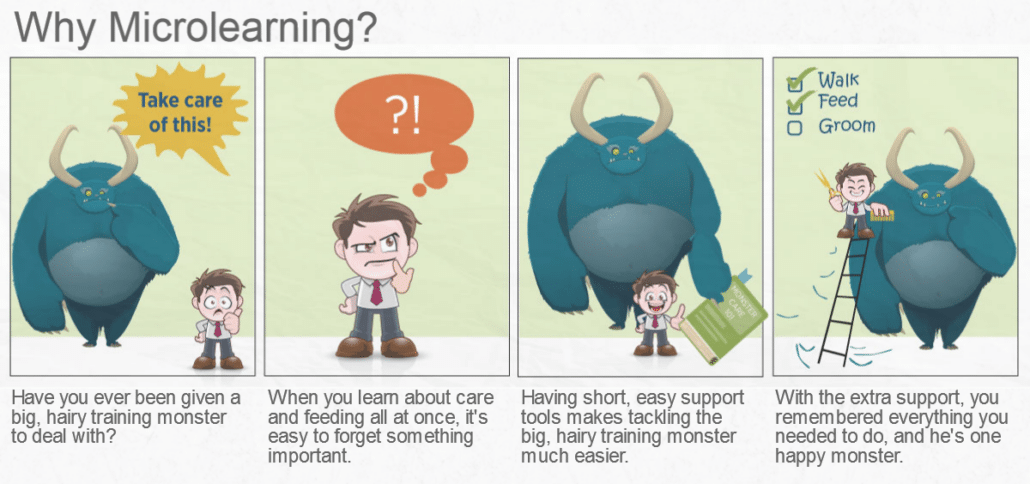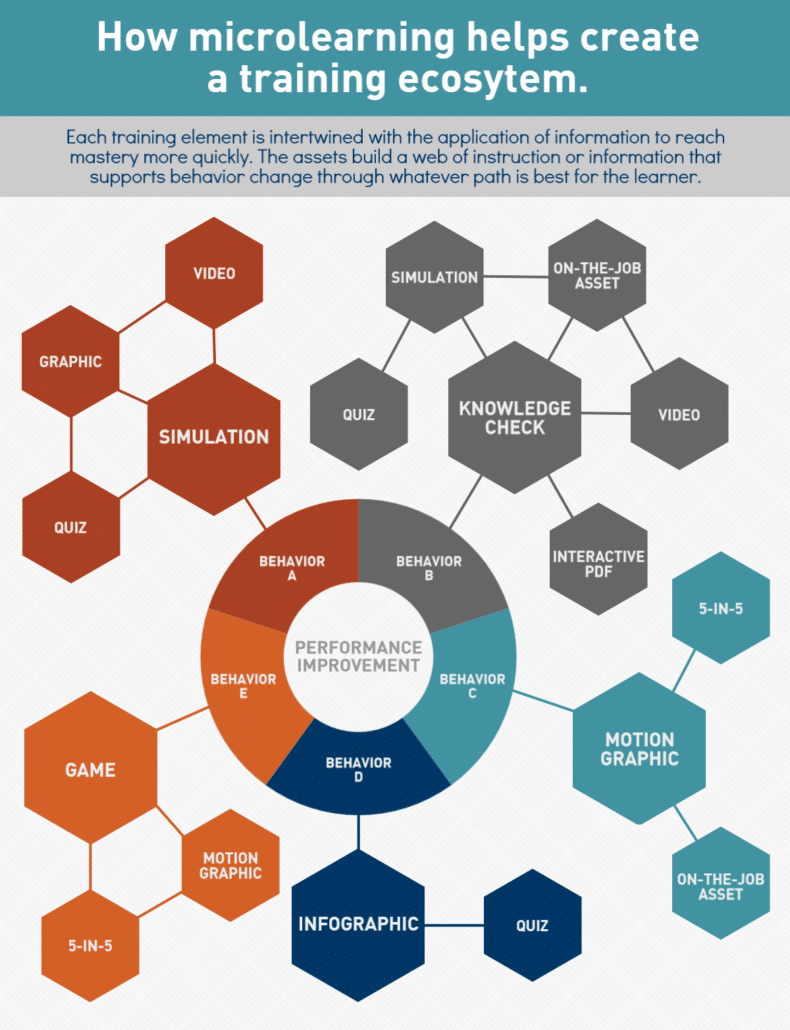To Impact Human Performance, You Need to Remember the Humans
In learning and development, the goal of every training initiative should be to improve human performance. So why is it easy to lose sight of the people at the core of your curriculum? Every project is a balancing act. You’re trying to weigh your objectives and learner needs against resources, budget, timeline, and capabilities. But that investment will be largely lost without supporting the people who take your training.
How do you keep the human element intact? One of the ways we help our clients make that shift is by using microlearning elements in their curriculums. Many concepts require a lot of information to reach proficiency, but when this information is lumped in a big block of traditional training with no reinforcement you are overwhelming learners, increasing their time to mastery and hurting your performance.
Traditionally training has been done at the beginning of a person’s employment. There is a lot of information given all at once, and there’s no ability to personalize the information based on learner experience or knowledge. People only have one opportunity to learn the information before they apply it and put it in practice. The rest of their education has to be on the job.
For Optimal Performance, Add Supporting Pieces
Creating microlearning courses, or including microlearning elements, allows you to break down the behaviors people need to improve to create good performance. Microlearning takes each step necessary to change behavior and creates a self-contained learning nugget, lengthens the delivery timelines and forces you to create more targeted, focused training.

Improve Performance Mastery by Adding Microlearning
Each piece of microlearning in a curriculum helps you create a learning ecosystem.
However, there is still resistance among many organizations to move toward incorporating microlearning because it’s seen as too long and reducing speed to proficiency. Instead microlearning does the opposite. Taken as a whole it will take less time than traditional training, and speeds up your learners’ path to mastery.
Because the training is intertwined with the application of information, learners reach mastery more quickly than with traditional training alone. This is because each behavior is broken down by complexity, then analyzed to determine what modality, activity type, repetition and message is needed to improve performance. Even with the best training, it takes time to move your learners from readiness to mastery and microlearning can provide the sustained support you need to speed up that process.
Each piece of microlearning in a curriculum helps you create a learning ecosystem—targeted instruction and reinforcement for the most challenging steps of a behavior and a web of information that supports the behaviors needed for achieving performance results. With short, engaging, memorable, accessible training that gives learners the power to prioritize the information they need, you make learners more confident and more effective.
Still not sure how to Improve Performance?
Check out the graphic below to see how each microlearning piece feeds into a larger part of your curriculum to change behaviors and improve performance.






